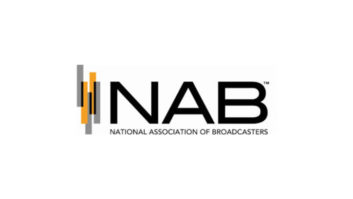Electronics Research Inc. has been in the business of manufacturing FM antennas for nearly 80 years, so the company’s opinions on broadcast transmission equipment carry a lot of weight within the broadcast industry.
The company recently expressed concerns about a proposed rulemaking being considered by the FCC to allow use of computational FM broadcast antenna pattern modeling technology. And that hesitation to endorse the idea is based on ERI’s experience with computer modeling, which shows it as only a good starting point.
“Still, the final design of directional and nondirectional FM and television antennas should be completed and verified with measured azimuth patterns on either an Antenna Test Range or in an anechoic chamber,” ERI told the FCC.
ERI told the FCC it worries the proposed changes would allow computer studies to confirm compliance with no verification that the performance of the computer simulation is accurate and correct.
The ERI filing included details and testing to support their position that approving the proposed changes would be detrimental to the public and the FM broadcast service, which has a history of station growth and increasing congestion.
The proposal would relax the requirement for directional FM antennas operated by full-service and low-power FM stations in the United States to submit measured azimuth pattern data, taken at either full-scale or fraction scale model. The elimination of the FCC requirement to provide measured horizontal plane pattern data with directional FM antenna license applications would reduce costs for broadcasters, experts say.
The broadcast transmission equipment manufacturer continued: “The proposed changes would allow computer studies to be used to confirm compliance with authorized facilities with no verification that the performance of the computer simulation is accurate and correct. In addition, the changes proposed are a relaxation of the rules applied to full-service FM stations. These facilities do not have an obligation to immediately cease operation if they cause interference to other full-service FM stations, as is the case for secondary services, FM translators, FM Boosters, and Low Power FM stations.”
The most common reason to use a directional antenna by a commercial full-power FM is to allow it to “short-space” to another FM station while maintaining contour protection to that station. Using electromagnetic modeling software can save time and expense for broadcasters, say industry experts, and the NAB in general supports the FCC’s NPRM.
Currently, applications proposing the use of directional FM antenna systems must include a tabulation of the antenna pattern through measurements performed on a test range of full scale or scaled model setup, commonly 4.1:1 or 4.5:1, according to the FCC.
ERI says it believes the proposed changes in the proceeding have the potential to “create protracted and contentious interference disputes” since the disputes would involve full-service FM stations that are licensed as a primary service.
The company also worries about the “overall noise floor and technical integrity of the FM band” should the FCC proceed.
[See Our Business and Law Page]
In addition, the antenna maker notes the FM Broadcast Band has a history of changes and additions to the types of services authorized, the power levels at which they have been allowed to operate, and the criteria used to site new facilities through modifications to the table of FM allotments. “The result has been an ever-increasing number of authorized facilities and a continuing impairment of fringe coverage,” it commented.
The number of full-service FM radio stations has grown from 2,306 in 1968 to 10,880 at the end of 2021, ERI says, which, combined with secondary services like on-frequency boosters, translators and LPFM stations, has reduced fringe area coverage for all full-service FM stations.
“And, in some cases, have caused interference that has resulted in the loss of service,” ERI wrote the FCC.
The FCC adopted a Notice for Proposed Rulemaking (NPRM) in November 2021 based on a joint petition from Dielectric, Jampro Antennas, Radio Frequency Systems and Shively Labs. The antenna manufacturers were joined by Educational Media Foundation in proposing the rule changes.
ERI in its comments takes issue with the FM directional antenna example used by the proponents in their petition, which ERI claims is not representative of the majority of directional FM antennas in service. The FCC says there are about 900 directional FM stations licensed in the U.S.
“The antenna is identified as a directional FM antenna built for WHEM(FM), licensed to Eau Claire, Wis. The antenna is a single bay FM antenna mounted to a 10-inch OD pole; this is not representative of most directional FM antenna systems in use. The vast majority of the proposals generated and orders filled by ERI for directional FM antennas are for multi-bay arrays mounted on lattice structures below the tower top of steel,” ERI said in comments filed by Tom Silliman, president and CEO of the company, and several other ERI employees.
However, ERI did acknowledge in its reply comments that “simple pole-mounted directional FM antennas without significant nulls are not complex and can be modeled, by a competent software user with considerable experience with the tools and their application, with good results.”
FM radio is the only remaining broadcast service in the United States that requires physical measurements, thereby preventing manufacturers and broadcasters from relying on computer modeling to verify directional antenna problems, according to the proposed rulemaking. The FCC in 2008 approved the use of the computer modeling technique known as the method of moments (MoM) to allow AM stations to do Proof of Performance of directional AM antenna patterns without the use of actual field strength measurements.
The ERI filing to the FCC’s MD Docket 21-422 includes details and testing to support its position that approving the changes to the FCC rules would be detrimental to the public and to FM broadcast services. You can also read more opinion on the computer modeling NPRM in the April 27 issue of Radio World.












